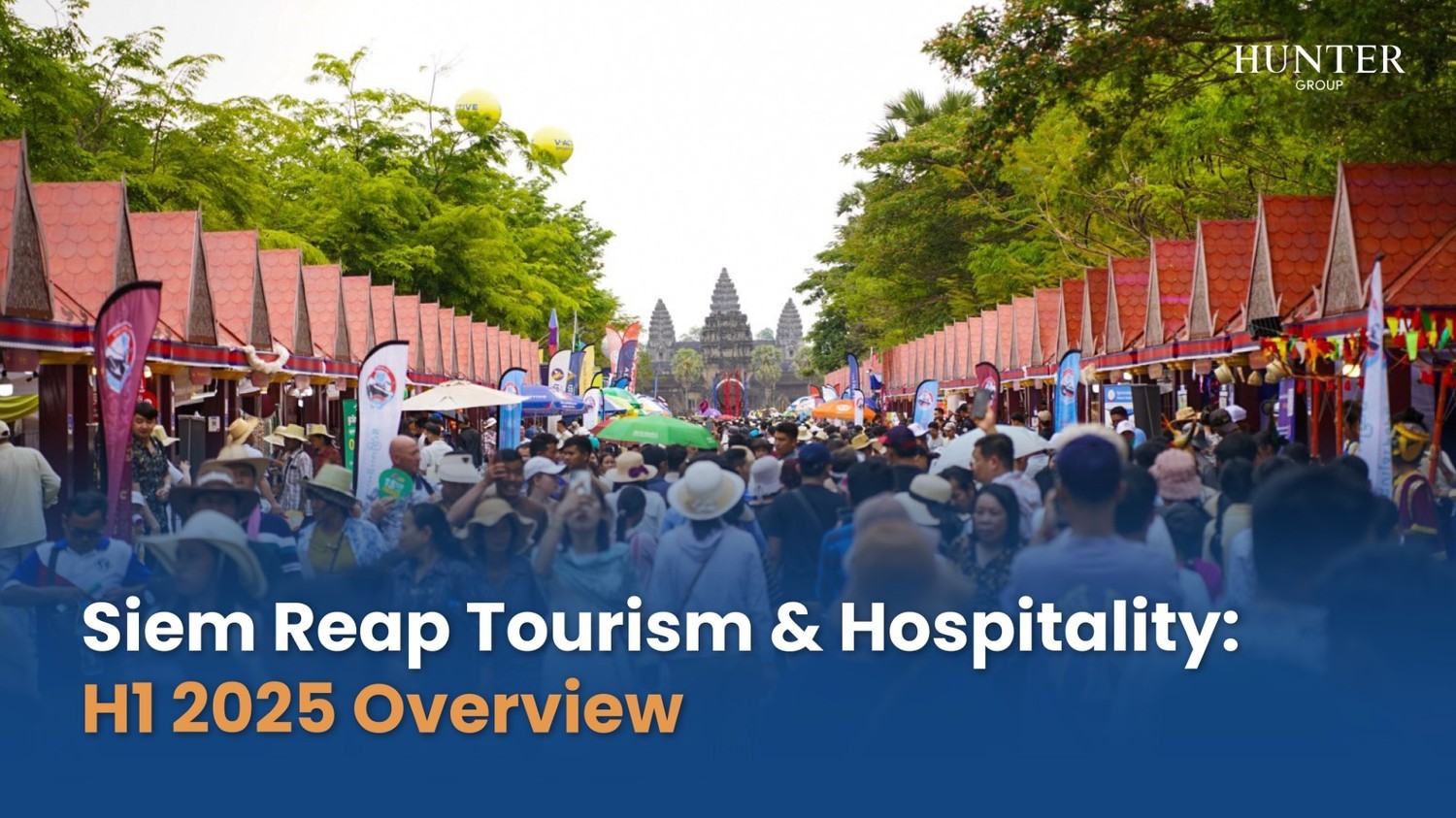Siem Reap, Cambodia – In 2019, Cambodia's tourism soared, with Siem Reap, a vibrant cultural hub, at its heart. Millions flocked to the ancient temples of Angkor, the lively Pub Street, and the serene countryside. Then came COVID-19, halting everything. Now, in 2025, with enhanced infrastructure and more direct flights introduced last year, Siem Reap is more accessible than ever. The focus has shifted from mere recovery to understanding the evolving dynamics of its resurgence.
Q1 2025: Data Reveals a Stronger Picture Than Perception
Despite a common perception that Siem Reap feels quieter than pre-pandemic times, official data tells a different story. According to the Ministry of Tourism, Siem Reap welcomed 806,631 visitors in the first quarter of 2025. This impressive figure surpasses Q1 2019 by over 2%, boosted by the holiday season and local festivals. This rebound is particularly encouraging given the significant global shifts in travel behavior.
Online booking platform data indicates that of Siem Reap's 578 registered hotels, 388 are currently operating, while 190 remain temporarily closed, likely for renovations, seasonal adjustments, or full occupancy. These statistics suggest robust momentum by regional standards.
Visitor behavior also paints a promising picture: while 46% of visitors opt for a single-night stay, a significant 27% are choosing to stay for up to a full week. This indicates a growing appetite for longer, more immersive experiences in the region.
Domestic Tourism: The Driving Force of Recovery
Domestic travelers are currently leading Siem Reap's tourism rebound, with over 50% of visitors originating from within Cambodia. This internal shift injects fresh energy into the local economy and highlights a renewed sense of cultural pride among Cambodians.
The current green season, from May to October 2024, is strategically positioned for domestic tourism. As heavy rains often limit travel to coastal areas like Sihanoukville and Kampot, more Cambodians are opting for inland destinations. From May to October 2024, Siem Reap attracted approximately 769,174 visitors, demonstrating its sustained appeal even during the off-peak season.
Meanwhile, international arrivals are gradually increasing, primarily from key markets:
- Thailand: 501,666 visitors
- Vietnam: 304,634 visitors (Assuming this was the missing country based on typical regional travel patterns)
- China: 286,156 visitors
- USA: 73,783 visitors
This strong international demand signals a confident recovery for Siem Reap as a preferred global destination.
The Future of Siem Reap: A Quiet Reinvention
Siem Reap's current trajectory isn't just a recovery; it's a thoughtful reinvention. With a more relaxed pace, a deep cultural identity, and continuously improving infrastructure, the city is evolving beyond just a tourist hotspot. It's becoming an attractive location for lifestyle investment.
For investors and business owners, the current trends highlight several key opportunities:
-
Experience-Focused Tourism: Today's travelers seek deeper, more meaningful engagements. This is driving demand for wellness retreats, local artisan workshops, eco-conscious accommodations, and cooking classes. Siem Reap, as a cultural hub, is well-positioned to offer diverse experience-focused activities, including Agritourism, where visitors can enjoy hands-on cooking, farm visits, and traditional ox cart rides.
-
Demand for Longer Stays: The rise of digital nomads and slow travelers spending extended periods in Siem Reap is creating new demand. This shift requires flexible accommodation options, coworking spaces, and more livable neighborhoods. Opportunities abound for hybrid cafés with strong Wi-Fi, boutique rentals offering monthly rates, and community-driven coworking spaces. These visitors aren't just passing through; they're settling in, creating a market for businesses that cater to everyday needs.
-
Evolving Local Spending Patterns: Domestic tourists have distinct spending habits, prioritizing comfort, food, and family-friendly activities. They often travel in groups, seek spacious accommodations, and value convenience. This trend is encouraging local businesses to focus more on resilient, repeat local audiences, particularly during holidays like Khmer New Year and Pchum Ben. Properties such as Sky Park Condotel and Velea at Rose Apple Square have successfully adapted by offering fully furnished, multi-room units ideal for families or groups, blending affordability with a home-away-from-home experience.
Siem Reap may not return to its exact pre-pandemic intensity, and perhaps it shouldn't. What's emerging is a more grounded, thoughtful, and purposeful destination, closely aligned with contemporary travel values. The numbers confirm a strong recovery, but the underlying atmosphere speaks to quiet resilience and a future shaped by forward momentum rather than a return to the past.
By Kem Sreyneth
Project Marketing & Communication at Hunter Group.
